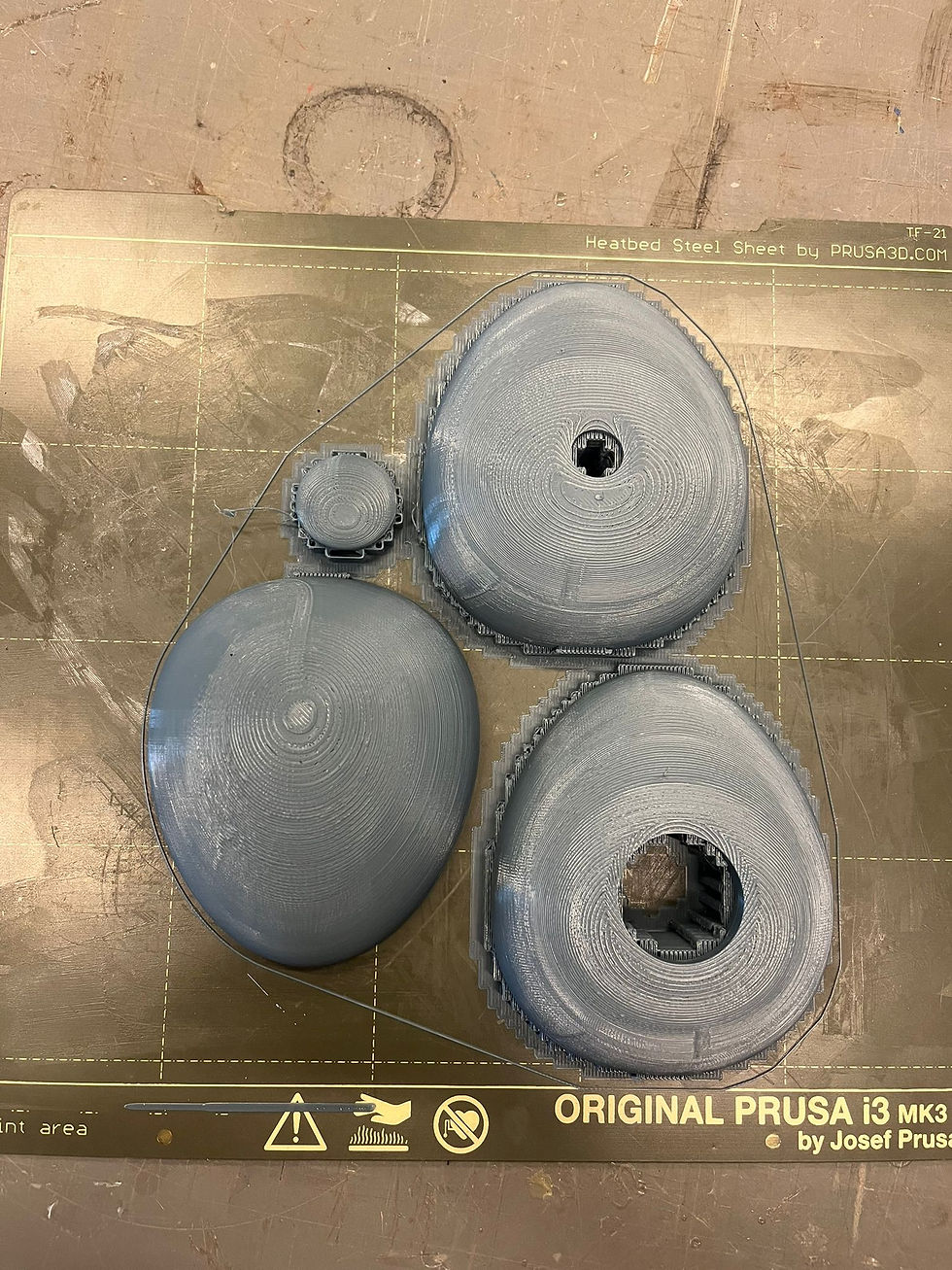The first 3D Printed iteration of Tastebud is here!
- Anina Sidransky
- Apr 30, 2023
- 4 min read
Following testing multiple interactions for our users - sliders, potentiometers, joysticks and clickers, we finally have a WINNER!
Our device that was specially designed to comfortably fit in the palm of your hand is equipped with a joystick that users can use to record their success after trying a new food or facing their food fears. How do they record exactly? By making a full circle motion with the joystick.


We focused on two levels of prototyping: a technological prototype and a low fidelity prototype. For the low fidelity prototype, we used sponges and joysticks to simulate the way the joystick would be held and used by users.

We created three units and tested them with users to explore a number of questions
In which direction did you move the joystick? (Clockwise or counterclockwise?)
Where did you start the round? (Up, down, right, or left?)
If there were lights accompanying your movement, how would that make you feel?
How does the device feel in your hand? Is the turning action smooth or does it require effort?
How did you feel after completing the round? Did you feel like the action was complete?
7 different user tests of the joystick showed that users felt that the joystick "circle" was both smooth and required no effort. We found that all of them naturally moved the joystick clockwise, and almost all of them started the movement from the top of the object. The users were split almost 50/50 regarding the size of the joystick, it was either the perfect size or too big. When we asked users about the feeling regarding the end of the action, about half of the users mentioned that a "click" of the joystick in addition to the circle would be a better way to end the interaction and symbolize the end of the report, based on users experience with joysticks.
In addition to the short tests with users, we sent the objects to potential users for two days. Each person was asked to carry the object with them and report on it after each meal by rotating the joystick. After two days, we sat down with the subjects and asked them a number of questions to get a clearer picture of the various aspects of the product design:
How does the device feel in your hand?
Which way did you carry the device with you throughout the day? Did you connect it to another source (phone/keys/bag) or did you leave it alone? What led you to this decision?
Is there a reference to the weight of the object? If the object is small/light, is it perceived as more "comfortable"? Does that increase the likelihood of persistence in carrying the object? If it's larger, is it perceived as more "serious"?
How did it feel to take the object with you everywhere?
How did you feel when you received the notification for the meal?
How did your expectation for the meal change according to the notification?
Have there been times when you forgot the object in a certain place? If so, how did you react when you found out it wasn't with you?
Did you at some point feel the need to receive the notification? Did you wait for it?
What feelings did the object evoke in you after this period of time?
After speaking with the users, we came to a few conclusions:
We found that the majority of subjects found the reminder helpful and were encouraged to try a new food at their next meal. However, in some cases where the meal preparation took place in advance, the reminder was found to be worthless due to the inability to respond to it. Some of the subjects said they appreciated the expectation of an alert and report of success, which encouraged them to plan some of their meals in advance.
We also discovered that the size of the device was a limiting factor, as the subjects found it difficult to carry the device in any other way than inside a bag.
We continued to work on the technological side of the project, focusing on developing a connection between the joystick and an LED strip in order to create an LED indication of the rotation on the user's platform. At the end of the round, the LEDs change their color to indicate that the round is over and the report is complete. After the addition of the lights to our prototype, we ran a few additional tests.
One user said of the lights, "I feel that the fact that the lighting pattern changes when I finish the rotation illustrates the completion of the process well enough." Another added "Because the lights started turning on gradually, I knew right away in which direction and in which way I had to turn the joystick. It was very clear and intuitive to me."

Armed with all that information, we ran to the lab to print out our first 3D version of the product. The model was built according to the size of the joystick and the LED circuit we worked with, so that we can connect them together and create a more precise and convenient prototype that will help us get better answers and reach more accurate conclusions.
We can't wait for what's in store!


Comments